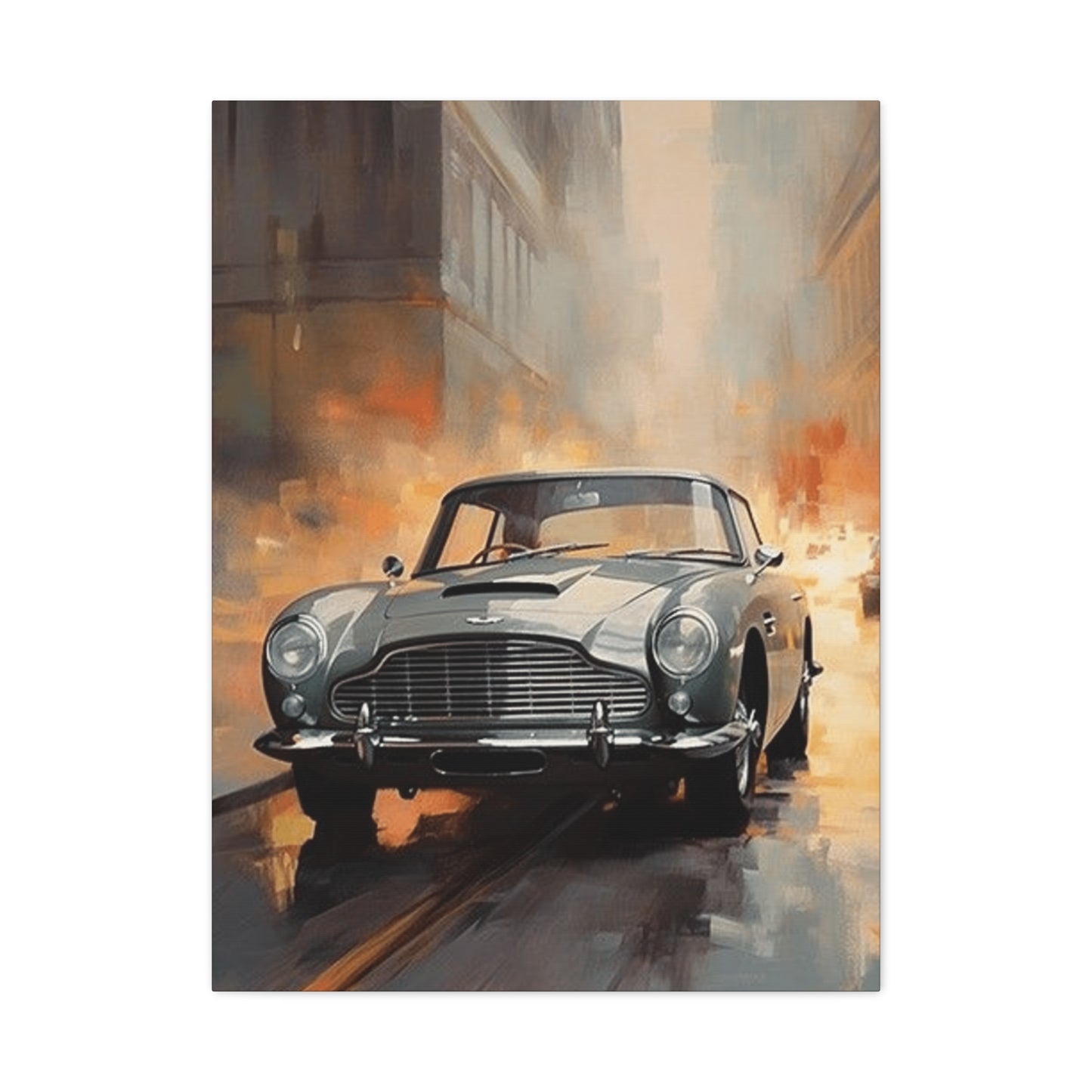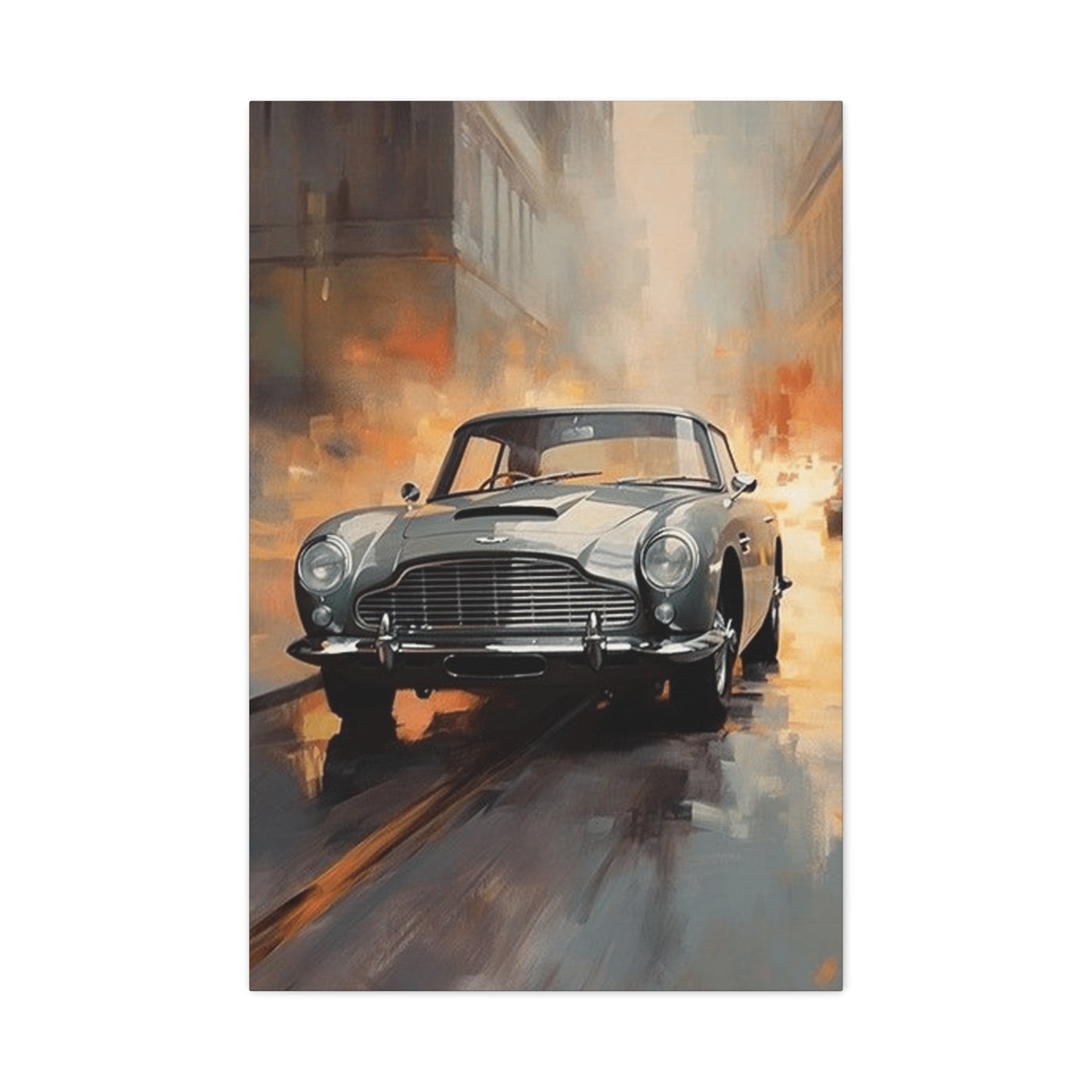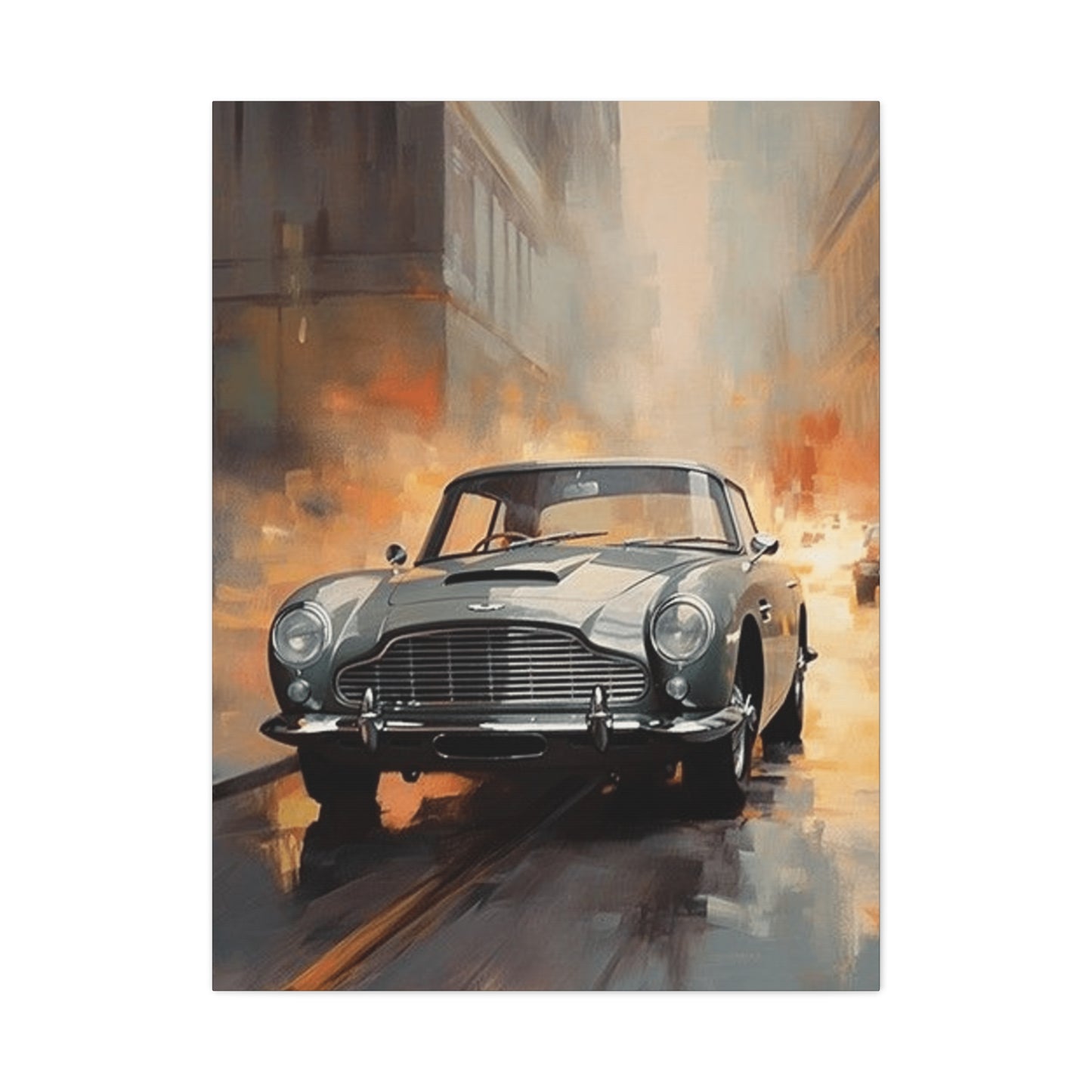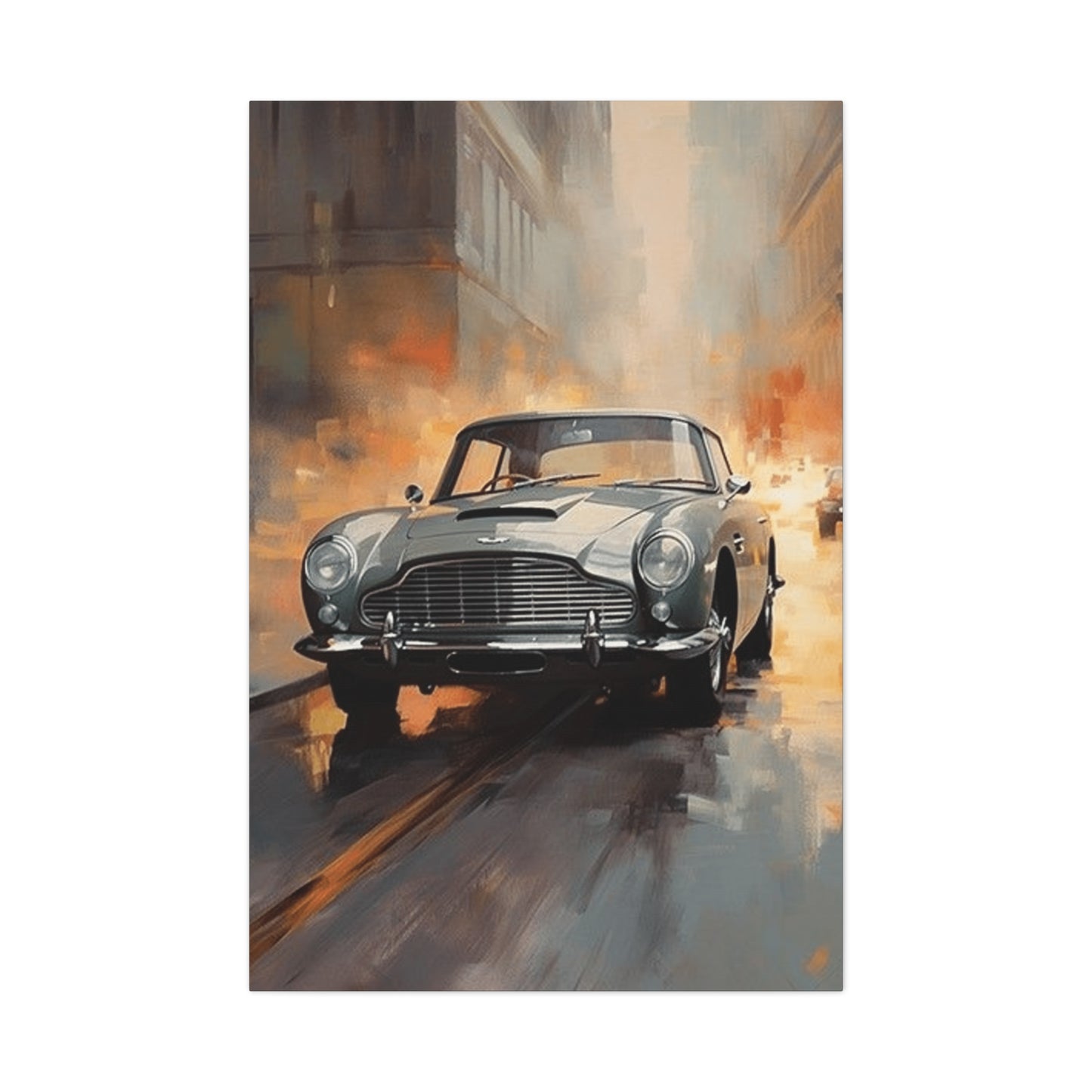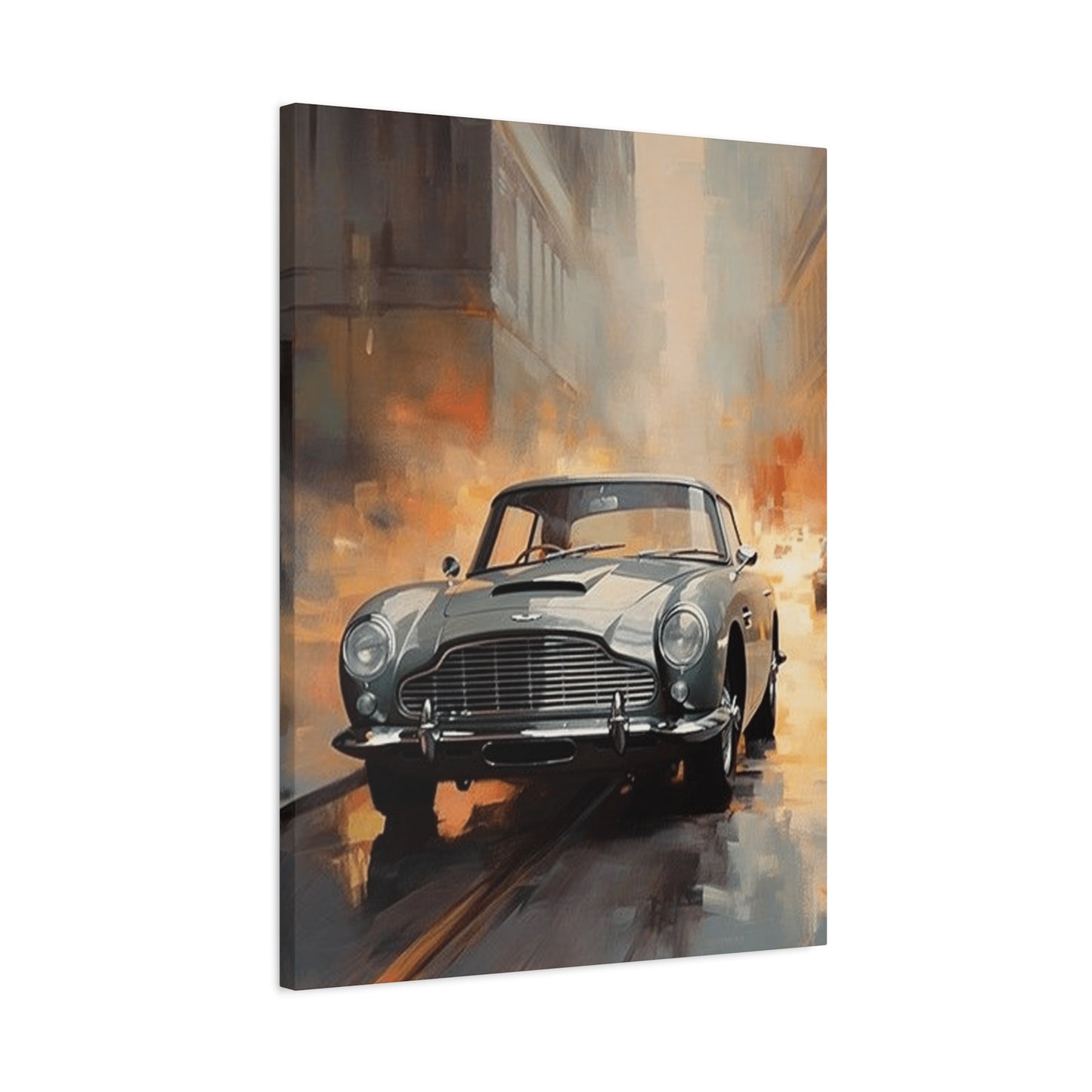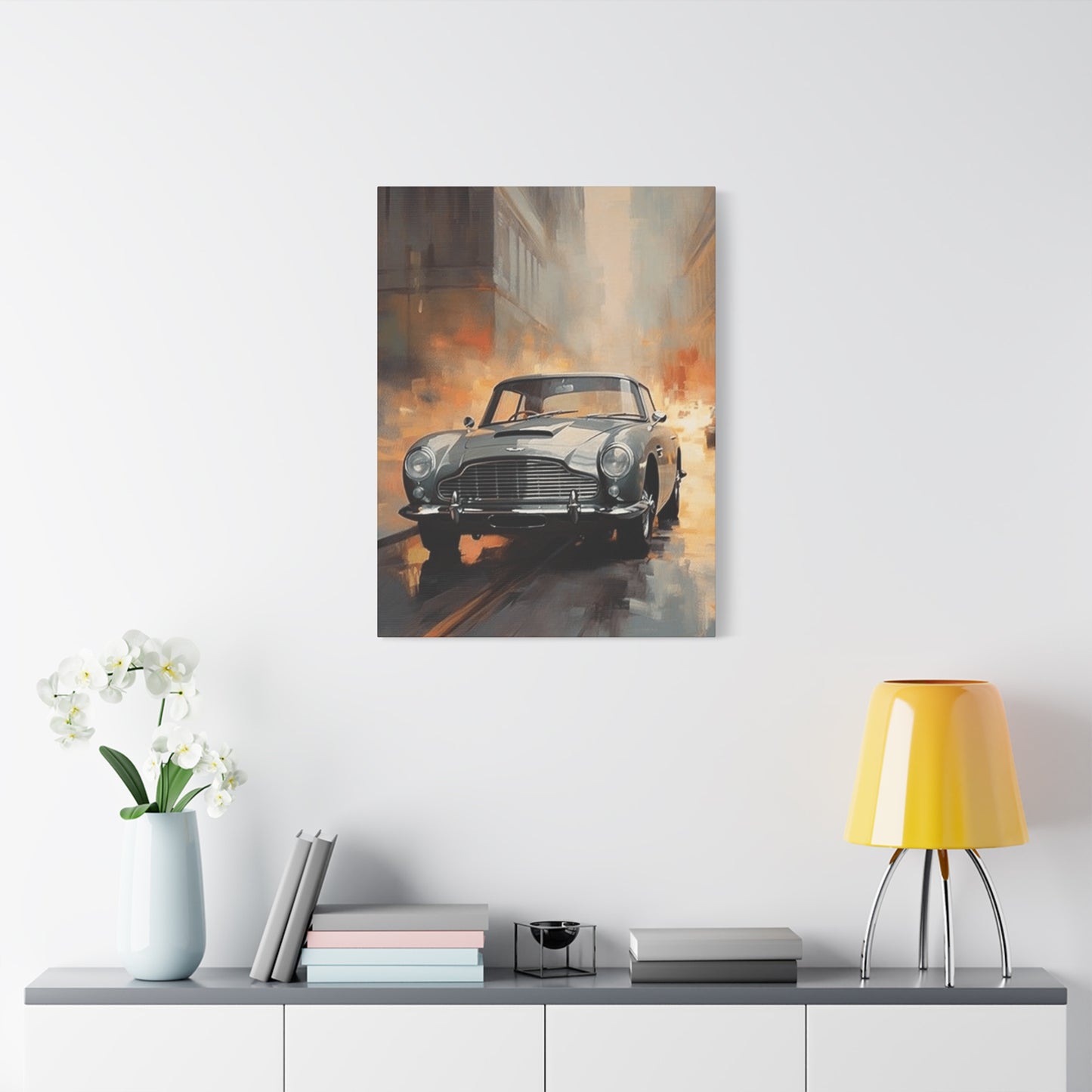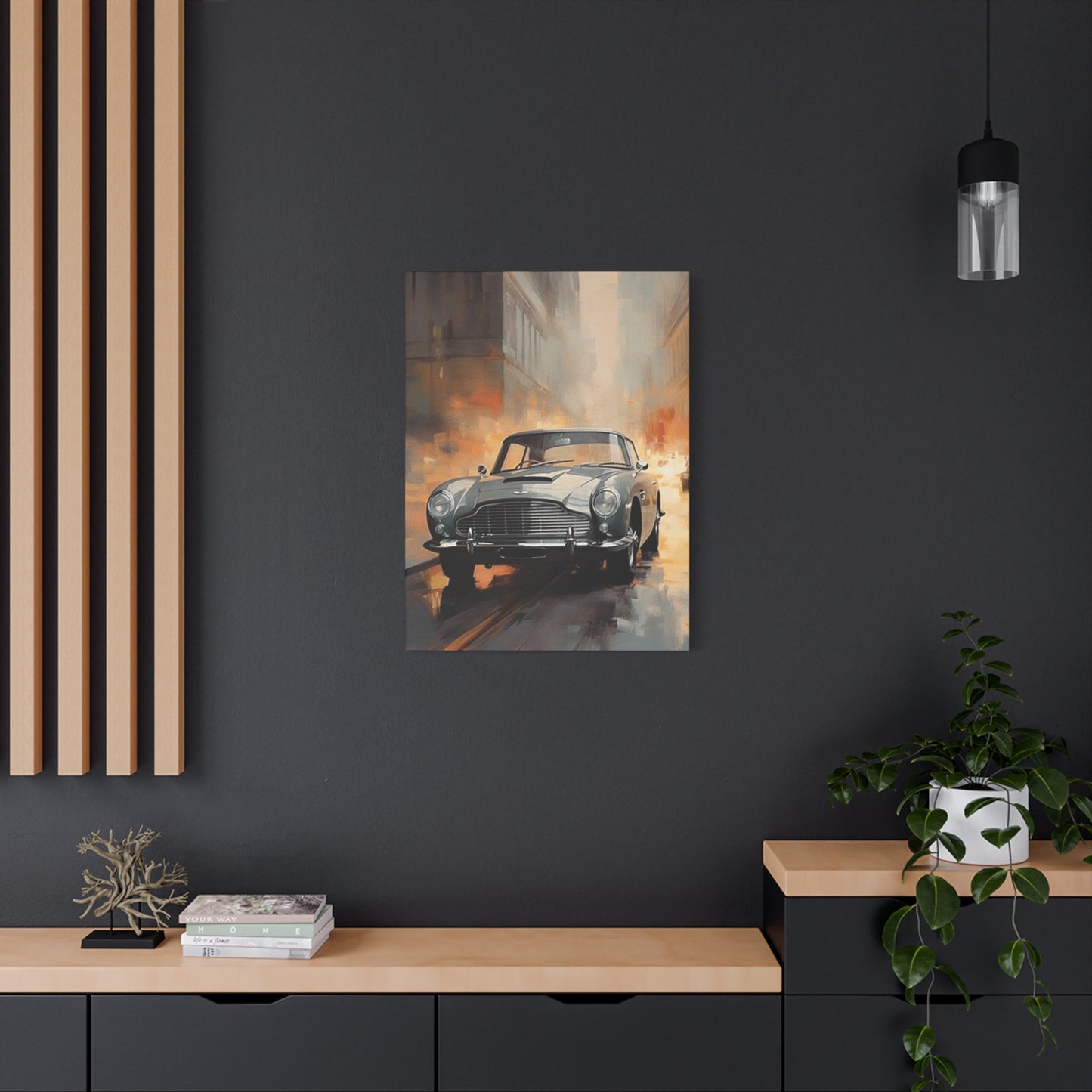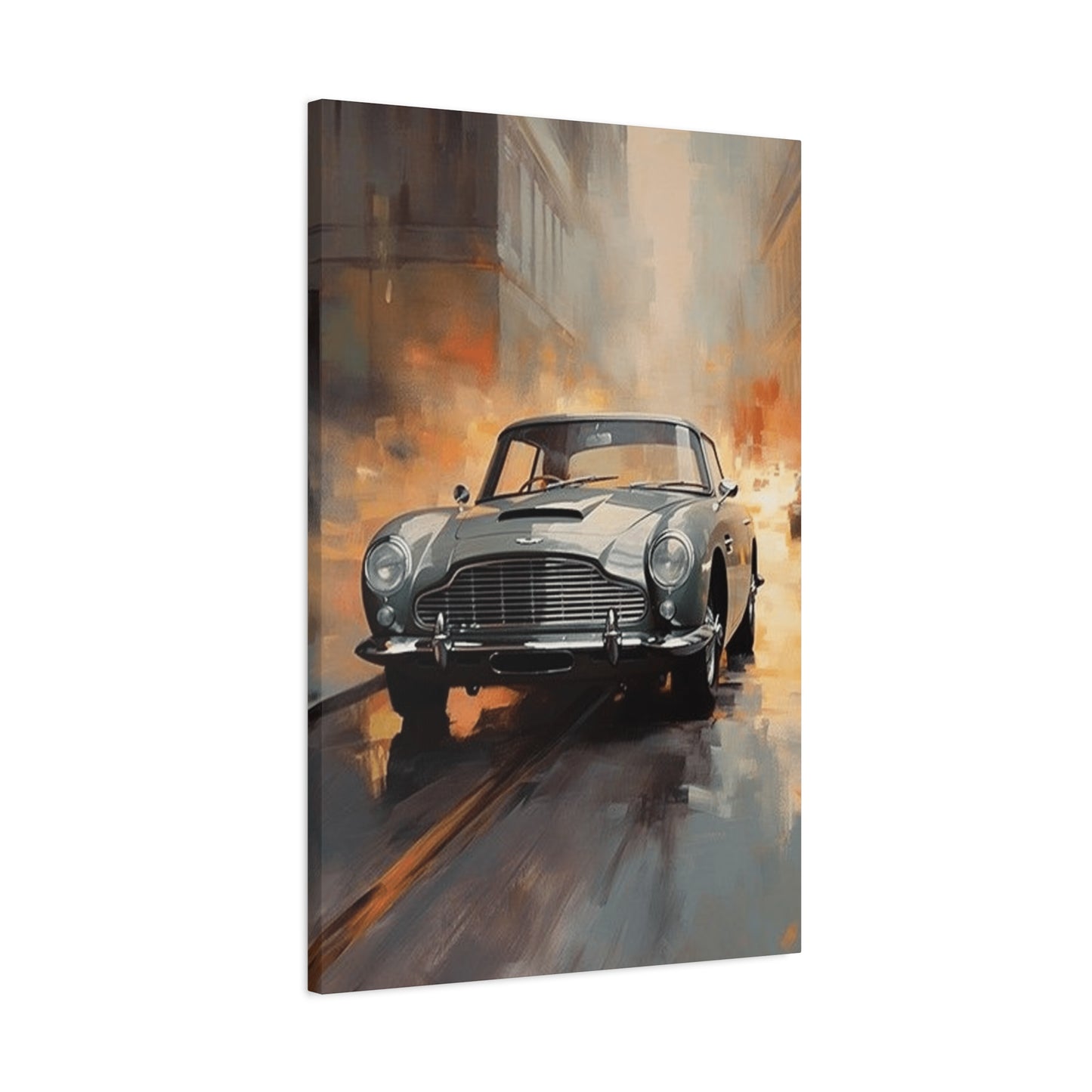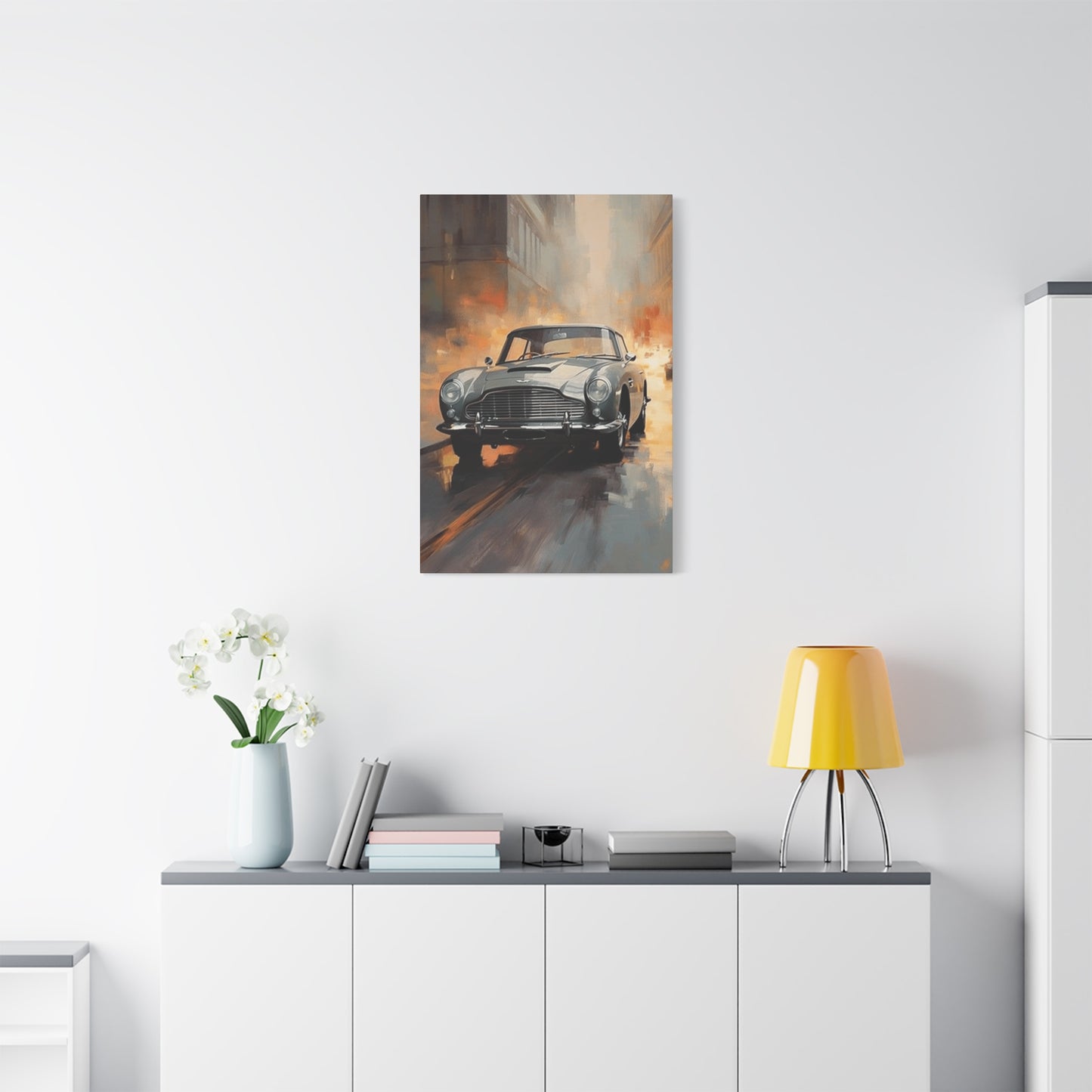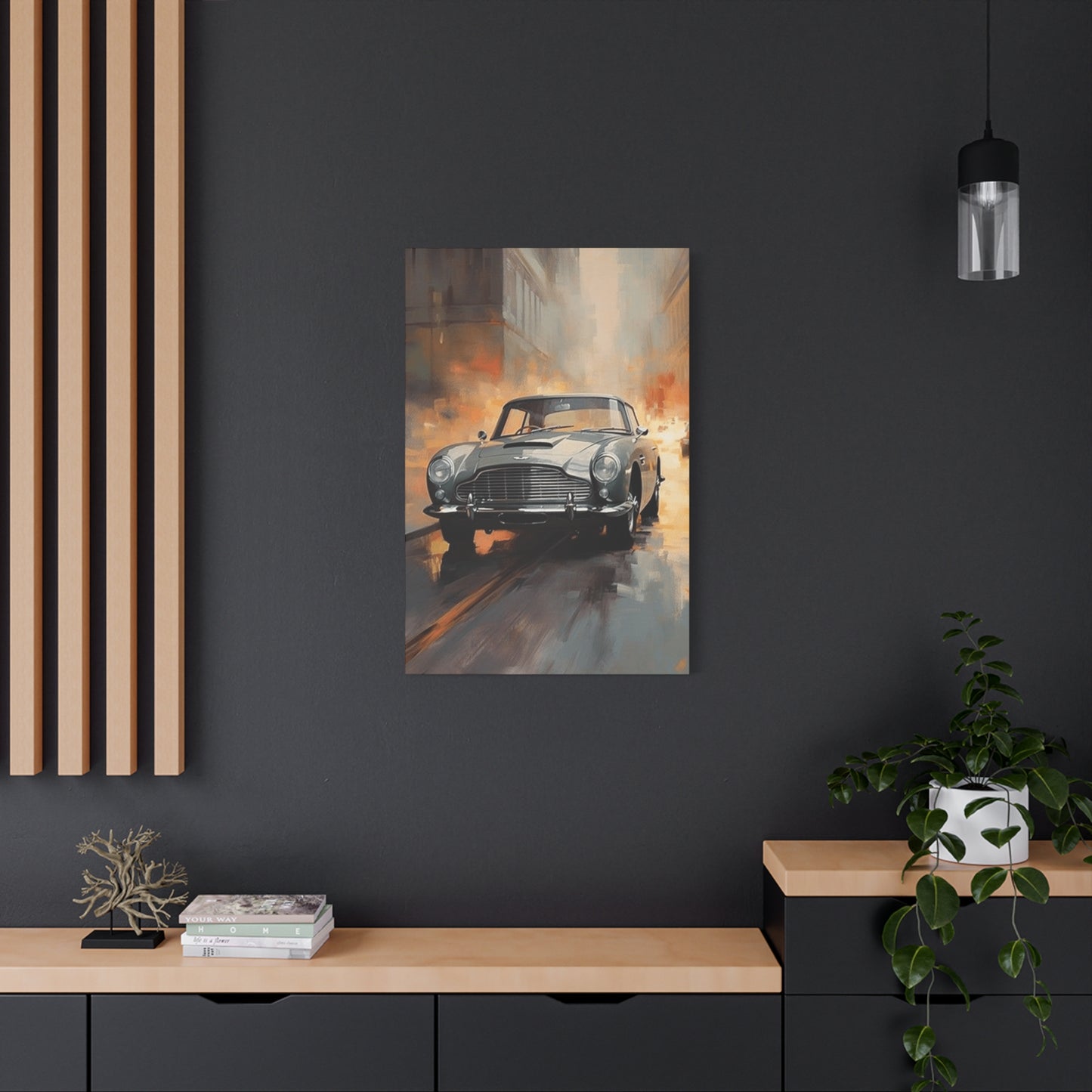Premier Car Wall Art Selections for Automotive Enthusiasts
The world of automotive wall art offers endless possibilities for car enthusiasts looking to transform their living spaces into showcases of their passion. When selecting the perfect pieces for your collection, consider artwork that resonates with your personal automotive interests and complements your existing décor scheme. Premium car wall art encompasses everything from meticulously detailed technical drawings of classic engines to dramatic action shots of racing vehicles captured in motion.
Quality automotive artwork serves as more than mere decoration; it becomes a conversation starter and a reflection of your personality. Look for pieces that feature exceptional printing quality, using archival inks and museum-grade materials that will maintain their vibrancy for years to come. Many collectors prefer limited edition prints that offer exclusivity and potential investment value, while others gravitate toward mass-produced options that provide affordability without sacrificing visual impact.
Consider the emotional connection you have with specific vehicles or automotive eras when making your selections. Whether you're drawn to the sleek lines of Italian supercars, the raw power of American muscle cars, or the precision engineering of German luxury vehicles, your wall art should reflect these preferences. The best automotive art captures not just the physical appearance of vehicles but also their spirit and the culture surrounding them.
When building your collection, diversify your selection to include various styles, sizes, and subjects. This approach creates visual interest and prevents your space from becoming monotonous. Mix detailed close-ups with wide-angle shots, combine color photographs with black and white images, and balance static display pieces with dynamic action scenes.
Research the artists and photographers behind your chosen pieces to better understand their techniques and artistic vision. Many automotive artists have specialized backgrounds in either automotive design or photography, bringing unique perspectives to their work. Supporting artists who share your passion for automobiles helps preserve and advance this specialized art form.
Classic Automotive Imagery in Exceptional Wall Prints
Classic car imagery represents some of the most beloved and enduring themes in automotive wall art. These timeless vehicles, spanning from the early days of motoring through the golden age of design, offer rich visual narratives that captivate viewers regardless of their automotive knowledge. The appeal of classic car prints lies in their ability to evoke nostalgia while celebrating the craftsmanship and design philosophy of bygone eras.
Selecting classic car prints requires attention to historical accuracy and artistic quality. Look for images that capture the authentic character of these vehicles, including period-correct details, appropriate settings, and accurate color representations. Many classic car enthusiasts appreciate prints that show these vehicles in their natural habitats, whether that's a 1950s drive-in theater, a winding mountain road, or a vintage racing circuit.
The photography and illustration techniques used in classic car art often reflect the aesthetic sensibilities of the era being depicted. Sepia-toned photographs evoke the early days of motoring, while vibrant color images from the 1960s and 1970s capture the optimism and boldness of those decades. Some artists deliberately use vintage photography techniques or printing processes to create authentic period looks.
Consider the stories behind the classic cars featured in your wall art. Each vehicle represents a specific moment in automotive history, embodying the technological innovations, design trends, and cultural values of its time. A print featuring a 1957 Chevrolet Bel Air tells a different story than one showcasing a 1973 Porsche 911, and understanding these narratives enriches your appreciation of the artwork.
The production quality of classic car prints significantly impacts their visual appeal and longevity. High-resolution printing processes ensure that fine details remain crisp and clear, while quality paper stocks provide the proper foundation for accurate color reproduction. Giclée printing, in particular, has become the gold standard for fine art reproduction, offering exceptional color accuracy and fade resistance.
When displaying classic car prints, consider the viewing distance and lighting conditions in your space. Large format prints work well in spacious rooms where viewers can appreciate the full composition, while smaller prints are ideal for intimate settings where detailed examination is possible. Proper lighting enhances the colors and details while protecting the prints from harmful UV exposure.
Transforming Your Garage into an Automotive Art Gallery
The garage represents the perfect canvas for automotive enthusiasts to display their passion through carefully curated wall art. Unlike other rooms in the home, garages allow for more bold and industrial design choices that complement the mechanical nature of the space. Creating an automotive art gallery in your garage requires thoughtful planning to balance functionality with aesthetic appeal.
Begin by assessing your garage's physical characteristics and limitations. Consider factors such as available wall space, existing storage requirements, electrical outlets for lighting, and environmental conditions. Garages can experience temperature fluctuations and humidity changes that may affect certain types of artwork, so choose pieces and framing materials accordingly. Sealed frames with UV-protective glass help preserve prints in these challenging environments.
Develop a cohesive theme or color scheme that ties your automotive art collection together while complementing your garage's existing features. Some enthusiasts prefer chronological arrangements that tell the story of automotive evolution, while others organize their displays by manufacturer, racing series, or vehicle type. Consider creating focal points using larger pieces or groupings of related images.
Lighting plays a crucial role in showcasing automotive art effectively in garage settings. Track lighting systems offer flexibility in directing light where needed, while LED strips can provide ambient illumination without generating excessive heat. Avoid placing artwork directly under harsh fluorescent shop lights, which can create unflattering shadows and color distortions.
Storage considerations become particularly important when displaying art in garages. Ensure that your wall displays don't interfere with vehicle parking, tool storage, or work areas. Adjustable mounting systems allow you to reconfigure your displays as your needs change or your collection grows. Consider creating dedicated zones for different activities while maintaining clear sight lines to appreciate your artwork.
The industrial nature of garage spaces offers unique opportunities for creative display methods. Exposed beams, concrete walls, and metal surfaces can serve as interesting backdrops for automotive art. Some enthusiasts incorporate automotive parts or tools into their displays, creating mixed-media installations that blur the line between functional items and decorative elements.
Temperature and humidity control deserve special attention when displaying valuable artwork in garage environments. Consider using dehumidifiers during humid seasons and ensuring adequate ventilation to prevent moisture-related damage. Some collectors install climate monitoring systems to track environmental conditions and protect their investments.
Vintage Automotive Posters for Nostalgic Interior Design
Vintage automotive posters offer a unique blend of historical significance and artistic appeal that makes them ideal for creating retro-styled interiors. These pieces often feature bold graphics, distinctive typography, and vibrant colors that were characteristic of their respective eras. Original vintage posters command premium prices due to their rarity and historical importance, while high-quality reproductions make these designs accessible to a broader audience.
The golden age of automotive poster design spans several decades, from the early promotional materials of the 1920s through the psychedelic racing posters of the 1960s and 1970s. Each era brought distinct design philosophies and printing techniques that reflected contemporary artistic movements and cultural trends. Art Deco influences dominate early automotive advertising, while mid-century modern design principles shaped posters from the 1950s and 1960s.
Racing event posters represent a particularly sought-after category within vintage automotive art. These pieces capture the excitement and glamour of motorsports while serving as historical documents of racing venues, participants, and sponsors. Original posters from prestigious events like Le Mans, Monaco Grand Prix, or Indianapolis 500 are considered treasures by collectors and can serve as centerpieces in any automotive-themed room.
Manufacturer promotional posters provide insights into how automotive companies marketed their products to consumers in different eras. These materials often feature idealized lifestyle imagery alongside technical specifications and performance claims. The artistic styles range from realistic illustrations to stylized graphic representations that emphasize emotional appeal over literal accuracy.
When incorporating vintage automotive posters into your interior design, consider the overall aesthetic you want to achieve. Authentic vintage pieces work best in spaces that embrace period-appropriate design elements, while reproduction posters can complement more eclectic or contemporary settings. The key is maintaining visual harmony between your wall art and other design elements in the room.
Preservation becomes a critical concern when dealing with original vintage posters. These pieces were often printed on relatively low-quality paper using inks that may fade or deteriorate over time. Professional conservation framing using archival materials and UV-filtering glass helps protect these valuable pieces from further degradation while allowing them to be displayed and enjoyed.
Authentication represents another important consideration when purchasing vintage automotive posters. The popularity of these items has led to numerous reproductions and forgeries entering the market. Working with reputable dealers who can provide provenance documentation helps ensure that you're acquiring genuine pieces with historical significance.
Contemporary Car Art for Modern Interior Spaces
Modern automotive art reflects current design trends while embracing new technologies and artistic techniques that weren't available to earlier generations of automotive artists. Contemporary pieces often feature clean lines, bold color choices, and innovative compositions that complement minimalist and modern interior design schemes. These works appeal to collectors who appreciate both automotive subjects and cutting-edge artistic expression.
Digital art has revolutionized contemporary automotive illustration, allowing artists to create hyper-realistic renderings and fantastical interpretations that would be impossible with traditional media. Computer-generated imagery enables precise control over lighting, perspective, and detail while offering unlimited possibilities for creative expression. Some artists combine digital techniques with traditional media to create unique hybrid works that bridge old and new approaches.
Contemporary automotive photographers have pushed the boundaries of their medium through innovative shooting techniques and post-processing methods. High-dynamic-range photography captures incredible detail in both shadows and highlights, while focus-stacking techniques ensure sharp detail throughout the entire image. These technical advances allow photographers to create prints with unprecedented clarity and visual impact.
Abstract and interpretive approaches to automotive subjects have gained popularity among contemporary artists. Rather than simply documenting vehicles' appearance, these artists extract essential design elements, emotional qualities, or conceptual themes to create works that transcend literal representation. Such pieces often work well in modern interiors where they complement rather than compete with contemporary furniture and architecture.
The influence of street art and graphic design can be seen in many contemporary automotive pieces. Bold graphics, unexpected color combinations, and mixed-media approaches create dynamic works that capture the energy and attitude of modern car culture. These pieces often appeal to younger collectors who appreciate the intersection of automotive enthusiasm with contemporary urban art movements.
Sustainability considerations have influenced contemporary automotive art production and collection practices. Many artists now use eco-friendly materials and printing processes, while collectors increasingly value works that reflect environmental consciousness. Electric vehicle themes have emerged as popular subjects, representing the industry's shift toward sustainable transportation solutions.
Installation and display considerations for contemporary automotive art often differ from those for traditional pieces. Some works incorporate interactive elements, video components, or lighting effects that require special electrical or structural accommodations. Planning for these requirements during the design phase ensures that your space can properly showcase these innovative works.
Creating the Perfect Automotive Man Cave Environment
The concept of the man cave as a masculine retreat space has evolved to embrace sophisticated design principles while maintaining its essential character as a personal sanctuary. Automotive-themed man caves offer enthusiasts the opportunity to surround themselves with their passion in a space designed specifically for relaxation and enjoyment. Successful automotive man caves balance comfort, functionality, and visual appeal through carefully selected wall art and complementary design elements.
Planning your automotive man cave begins with defining the space's primary functions and identifying the automotive themes that resonate most strongly with your interests. Some enthusiasts prefer focused collections that celebrate a single manufacturer or racing series, while others enjoy eclectic displays that represent various aspects of automotive culture. Your wall art selections should reflect these preferences while maintaining visual coherence throughout the space.
The scale and proportion of your wall art must complement the physical dimensions of your man cave. Large spaces can accommodate oversized prints and expansive gallery walls, while smaller rooms benefit from carefully edited selections that avoid visual clutter. Consider creating a single dramatic focal point using a large piece or grouping several related images to achieve similar impact.
Seating arrangements in automotive man caves should encourage appreciation of your wall art while supporting the space's social functions. Position chairs and sofas to provide clear sight lines to key pieces while facilitating conversation among guests. Adjustable lighting allows you to highlight specific artworks during different activities, whether you're reading automotive magazines or entertaining fellow enthusiasts.
The integration of automotive memorabilia with wall art creates rich, layered displays that tell comprehensive stories about your interests. Model cars, vintage signs, racing trophies, and automotive parts can complement your prints and photographs while adding three-dimensional interest to your displays. However, avoid overcrowding, which can diminish the impact of individual pieces.
Technology integration in modern man caves offers new possibilities for displaying and enjoying automotive content. Digital picture frames can cycle through extensive collections of automotive images, while large-screen displays can showcase automotive videos or interactive content. Consider how these elements will interact with your traditional wall art to create a cohesive overall experience.
Storage solutions for automotive literature and memorabilia should be incorporated into your man cave design from the beginning. Built-in shelving, display cases, and storage cabinets help organize your collection while keeping frequently referenced materials easily accessible. These functional elements can also serve as display surfaces for smaller automotive art pieces.
Legendary Sports Cars as Artistic Inspiration
Sports cars represent the pinnacle of automotive design and engineering achievement, making them natural subjects for compelling wall art. These vehicles embody the marriage of form and function, demonstrating how aesthetic beauty and performance capability can coexist in perfect harmony. Sports car art captures not only the physical beauty of these machines but also their emotional impact and cultural significance.
Italian supercars have long been celebrated for their sculptural beauty and passionate design philosophy. Brands like Ferrari, Lamborghini, and Maserati have produced vehicles that transcend mere transportation to become rolling works of art. Wall art featuring these marques often emphasizes their flowing lines, dramatic proportions, and distinctive design details that set them apart from more mundane vehicles.
German sports cars take a different approach to design, emphasizing precision engineering and purposeful aesthetics. Porsche, BMW, and Mercedes-Benz sports cars exhibit clean lines and efficient forms that reflect their manufacturers' technical expertise. Art featuring these vehicles often highlights their engineered beauty and track-tested performance capabilities.
British sports cars possess their own distinctive character, combining traditional craftsmanship with innovative design solutions. Brands like Aston Martin, Jaguar, and McLaren have created vehicles that balance elegance with performance in uniquely British ways. Wall art celebrating these marques often captures their sophisticated aesthetic and rich racing heritage.
American sports cars represent a bold, powerful approach to performance vehicle design. The Chevrolet Corvette, Ford GT, and Dodge Viper embody distinctly American values of power, value, and accessibility. Artistic representations of these vehicles often emphasize their muscular proportions and aggressive styling cues that communicate their performance intentions.
Contemporary sports car art increasingly focuses on the technical aspects of these vehicles that contribute to their performance capabilities. Cutaway illustrations revealing internal components, aerodynamic flow visualizations, and engineering detail studies appeal to enthusiasts who appreciate the technical artistry behind these machines' capabilities.
The photography of sports cars requires specialized techniques and equipment to capture their essence effectively. High-speed photography freezes action at racing events, while studio photography under controlled lighting conditions reveals every design detail. Location photography places these vehicles in environments that complement their character, whether that's mountain roads, racing circuits, or urban landscapes.
Creative DIY Automotive Art Projects
Creating your own automotive wall art offers the satisfaction of personal expression while allowing you to customize pieces that perfectly match your space and interests. DIY automotive art projects range from simple photography printing to complex mixed-media installations that incorporate automotive parts and materials. These projects provide opportunities to develop artistic skills while saving money compared to purchasing professional artwork.
Photography projects represent one of the most accessible entry points into DIY automotive art. Modern digital cameras and smartphones are capable of producing high-quality images suitable for wall display when used with proper technique. Learning basic photography principles such as composition, lighting, and exposure control enables you to capture compelling automotive subjects at car shows, racing events, or even in your own garage.
Drawing and painting automotive subjects requires patience and practice but offers unlimited creative possibilities. Traditional media such as pencils, charcoal, watercolors, and oils each provide different aesthetic qualities and technical challenges. Digital drawing tablets and software programs offer modern alternatives that combine traditional artistic techniques with contemporary tools and correction capabilities.
Mixed-media projects that incorporate actual automotive parts create unique three-dimensional artworks that are impossible to purchase elsewhere. Vintage license plates, chrome trim pieces, steering wheels, and other automotive components can be arranged and mounted to create compelling displays. These projects often work particularly well in garage workshops or automotive-themed man caves.
Stenciling and spray painting techniques borrowed from automotive customization culture can create dynamic wall graphics inspired by racing liveries, manufacturer logos, or custom designs. These projects require careful planning and execution but can produce professional-looking results at relatively low cost. Proper ventilation and safety equipment are essential when working with spray paints and solvents.
Collage techniques using automotive magazine images, brochures, and other printed materials can create complex compositions that tell automotive stories or celebrate specific themes. These projects work particularly well for creating large-scale pieces that would be expensive to purchase as professional prints. Digital collage techniques offer additional possibilities for combining and manipulating source materials.
The mounting and framing of DIY automotive art requires attention to preservation principles to ensure that your creations remain attractive and intact over time. Quality materials may represent a significant portion of your project budget, but they're essential for achieving professional-looking results that will last for years.
Professional Framing Techniques for Automotive Prints
Proper framing serves multiple purposes in displaying automotive prints: protection from environmental damage, enhancement of visual presentation, and integration with surrounding décor elements. Professional framing techniques ensure that your automotive art investments remain in excellent condition while achieving maximum visual impact in your display spaces. Understanding these techniques helps you make informed decisions when working with framers or undertaking framing projects yourself.
Mat selection significantly influences both the aesthetic appearance and preservation qualities of framed automotive prints. Acid-free mats prevent chemical reactions that could damage prints over time, while the mat color and width affect the visual relationship between the artwork and its surroundings. Neutral colors often work well with automotive subjects, though dramatic contrasts can create striking effects when used judiciously.
Glass selection involves balancing protection, clarity, and cost considerations. Regular glass provides basic protection but may create glare issues in certain lighting conditions. Museum glass offers superior clarity and UV protection but commands premium pricing. Acrylic alternatives provide impact resistance and lighter weight while maintaining good optical qualities for most applications.
Frame materials and styles should complement both the artwork and the display environment. Traditional wood frames work well in residential settings, while metal frames often suit industrial or contemporary spaces better. The frame's visual weight should balance the artwork's content and size without overwhelming or underwhelming the overall composition.
Mounting techniques affect both the preservation and presentation of automotive prints. Archival mounting methods avoid adhesives and attachment methods that could damage the artwork, while still providing secure positioning within the frame. Floating mounts create interesting visual effects by revealing the full edges of the print, which can work particularly well with photography that extends to the paper edges.
Conservation framing techniques become particularly important for valuable or irreplaceable automotive prints. These methods use only archival materials and reversible attachment techniques that allow future conservation treatment if needed. While conservation framing costs more initially, it provides the best long-term protection for significant pieces.
Proper handling and installation of framed automotive art prevents damage during transport and mounting. Large frames require appropriate hanging hardware and wall anchoring to ensure secure installation, while proper spacing and leveling create professional-looking gallery walls. Consider hiring professional installers for valuable pieces or complex arrangements.
Automotive Art in Professional Office Environments
Incorporating automotive wall art into office spaces requires careful consideration of professional image, company culture, and workspace functionality. When done appropriately, automotive art can create engaging environments that reflect personal interests while maintaining professional standards. The key lies in selecting pieces that complement rather than distract from the office's primary business functions.
Executive offices often provide the most freedom for personal expression through automotive art, as these spaces reflect individual leadership styles and interests. High-quality prints featuring classic or luxury vehicles can convey sophistication and attention to detail, while racing imagery might communicate competitive spirit and performance focus. The artwork should enhance rather than overwhelm the professional atmosphere.
Reception and common areas offer opportunities to showcase automotive art that reflects company culture or industry connections. Automotive businesses naturally benefit from displays that demonstrate industry knowledge and passion, while other companies might use automotive art to communicate values such as innovation, precision, or performance excellence. Consider how visitors and clients will perceive these displays.
Conference rooms and meeting spaces can benefit from automotive art that stimulates creativity and conversation without creating distractions during important discussions. Abstract or stylized automotive images often work better than highly detailed or dynamic pieces that might draw attention away from meeting content. The artwork should enhance the room's atmosphere without dominating it.
Workspace productivity considerations influence automotive art selection in open offices and collaborative areas. While personal expression through wall art can improve job satisfaction and workplace enjoyment, the artwork shouldn't interfere with concentration or professional interactions. Smaller, more subtle pieces often work better than large, bold displays in these settings.
Professional image management becomes crucial when selecting automotive art for client-facing offices. The artwork should reinforce rather than contradict the company's brand message and values. Conservative businesses might prefer classic automotive imagery that communicates tradition and reliability, while innovative companies could embrace contemporary or abstract automotive art.
Lighting design in office environments must accommodate both functional work requirements and aesthetic art display needs. Track lighting systems offer flexibility in highlighting specific pieces while providing general workspace illumination. Consider how natural light from windows will interact with your automotive art throughout the day, particularly regarding glare and fading concerns.
Abstract Automotive Art for Contemporary Spaces
Abstract automotive art offers a sophisticated approach to incorporating automotive themes into contemporary interiors without the literal representation that might seem inappropriate in certain settings. These pieces extract essential design elements, emotional qualities, or conceptual themes from automotive subjects to create works that function as pure art while maintaining their automotive inspiration. This approach appeals to enthusiasts who want to express their passion in subtle, refined ways.
Color field paintings inspired by automotive subjects can capture the emotional essence of driving experiences or vehicle aesthetics through pure color relationships and compositions. These pieces might abstract the colors found in favorite racing liveries, the warm tones of sunset drives, or the cool palette of morning highway travels. Such works integrate seamlessly into contemporary interiors while maintaining their automotive connections for those who understand their inspiration.
Geometric abstractions based on automotive design elements extract the pure forms found in vehicle aesthetics and engineering components. Artists might focus on the curves of fender lines, the angles of aerodynamic elements, or the patterns created by mechanical components. These works celebrate the design principles underlying automotive beauty while functioning as sophisticated contemporary art pieces.
Mixed-media abstract works can incorporate actual automotive materials such as carbon fiber, aluminum, or leather into artistic compositions that blur the boundaries between functional components and aesthetic elements. These pieces often work particularly well in modern interiors where the industrial materials complement contemporary architectural elements and furniture choices.
Dynamic abstract compositions attempt to capture the sensation of motion, speed, and automotive experiences through gestural painting techniques, flowing forms, and energetic color applications. These works might represent the blur of highway driving, the excitement of racing, or the mechanical rhythm of engine operation through purely visual means rather than literal representation.
Minimalist approaches to automotive abstraction reduce complex vehicles and experiences to their most essential elements, often using limited color palettes and simple geometric forms. These pieces work exceptionally well in contemporary spaces where visual restraint and conceptual sophistication are valued over decorative complexity or obvious subject matter.
The interpretation and appreciation of abstract automotive art often require more engagement from viewers than representational works, making them excellent conversation starters and sources of ongoing visual interest. These pieces reward careful observation and contemplation while avoiding the potentially overwhelming presence of literal automotive imagery in refined interior settings.
American Muscle Cars in Wall Decoration Schemes
American muscle cars represent a distinctly American automotive philosophy that emphasizes raw power, bold styling, and accessible performance. These vehicles from the 1960s and 1970s golden age, along with their contemporary successors, provide compelling subjects for wall art that celebrates American automotive achievement and cultural identity. Muscle car art often emphasizes the aggressive, powerful aesthetic that defined this automotive movement.
The classic muscle car era produced vehicles with distinctive visual characteristics that translate exceptionally well to wall art. The long hoods, short decks, prominent grilles, and muscular proportions of cars like the Dodge Charger, Chevrolet Camaro, and Ford Mustang create dynamic compositions that command attention in any room. Artists often emphasize these design elements to capture the essence of American performance car culture.
Color plays a crucial role in muscle car art, as these vehicles were often available in bold, vibrant paint schemes that reflected the optimistic, rebellious spirit of their era. High Impact Colors like Plum Crazy Purple, Go Mango Orange, and Grabber Blue became iconic elements of muscle car culture. Wall art featuring these vehicles often celebrates these distinctive color choices as essential parts of their character and appeal.
Racing heritage provides rich source material for muscle car wall art, as many of these vehicles achieved success in various forms of motorsports. Trans Am racing, drag racing, and NASCAR competition all featured muscle cars prominently, creating opportunities for dynamic action photography and illustration. These racing contexts often provide more visually interesting compositions than static studio shots.
The cultural significance of muscle cars extends beyond their automotive achievements to encompass their roles in American popular culture, music, and lifestyle. Wall art that captures these broader cultural connections often resonates with viewers who appreciate the social and historical contexts surrounding these vehicles. Such pieces might incorporate period elements like drive-in theaters, gas stations, or music festival imagery.
Contemporary muscle car art must balance respect for classic designs with recognition of modern performance achievements. Current vehicles like the Dodge Challenger Hellcat, Chevrolet Camaro ZL1, and Ford Mustang Shelby GT500 continue the muscle car tradition while incorporating modern technology and safety features. Art featuring these vehicles often emphasizes continuity with classic designs while celebrating contemporary capabilities.
The photography and illustration of muscle cars requires techniques that capture their powerful, aggressive character. Low camera angles emphasize their imposing presence, while dramatic lighting can highlight their muscular body surfaces and distinctive details. Motion photography that captures these vehicles in action often proves more compelling than static display images.
Monochromatic Automotive Photography for Interior Design
Black and white automotive photography offers a timeless, sophisticated approach to automotive wall art that works exceptionally well in various interior design schemes. The absence of color forces viewers to focus on form, texture, light, and composition, often revealing aspects of automotive design that might be overlooked in color photography. This classic approach to automotive imaging has maintained its popularity throughout the history of automotive photography.
The technical aspects of creating compelling black and white automotive photography require understanding how colors translate to grayscale tones and how contrast affects visual impact. Successful black and white automotive images often feature strong tonal contrasts that define shapes and highlight important design elements. The interplay of light and shadow becomes crucial in creating depth and dimensional awareness without color cues.
Classic automotive subjects often work particularly well in black and white photography, as the monochromatic treatment enhances their timeless appeal and historical character. Vintage racing cars, classic luxury vehicles, and iconic design studies gain additional gravitas when rendered in black and white, emphasizing their significance as automotive artifacts and design achievements.
Contemporary automotive photography in black and white can create striking contrasts between old and new aesthetic approaches. Modern vehicles rendered in monochromatic treatments often emphasize their sculptural qualities and design sophistication, while the absence of color prevents viewers from being distracted by contemporary paint schemes or marketing-driven color choices.
The printing and display considerations for black and white automotive photography differ somewhat from color work. Paper selection becomes more critical, as different paper surfaces and textures can significantly affect the appearance of grayscale images. Matte papers often work well for vintage subjects, while glossy or semi-gloss surfaces might better suit contemporary vehicles with complex surface treatments.
Interior design integration of black and white automotive photography offers exceptional versatility, as these pieces complement virtually any color scheme without creating conflicts. The monochromatic nature allows the artwork to function as neutral design elements while still providing visual interest and personal expression. This versatility makes black and white automotive photography particularly suitable for offices and professional environments.
The emotional impact of black and white automotive photography often differs from color work, typically conveying more serious, contemplative, or nostalgic feelings. This characteristic makes monochromatic automotive art particularly suitable for spaces where sophisticated, mature aesthetics are desired rather than bold, energetic expressions.
Sourcing Authentic Automotive Wall Art
Finding authentic automotive wall art requires knowledge of reputable sources, understanding of market values, and ability to distinguish quality pieces from inferior alternatives. The automotive art market encompasses everything from original paintings and limited edition prints to mass-produced posters and reproductions. Successful collecting requires developing expertise in evaluating authenticity, condition, and artistic merit.
Art galleries specializing in automotive subjects often provide the highest quality pieces along with expert authentication and provenance documentation. These venues typically feature works by established automotive artists and photographers whose pieces have demonstrated market value and collector interest. Gallery relationships can provide access to new works and exclusive editions not available through other channels.
Auction houses occasionally feature automotive art, particularly pieces with significant provenance or connection to notable automotive events or personalities. These venues can offer opportunities to acquire rare or unique pieces, though careful research and condition assessment are essential before bidding. Auction results also provide valuable market data for establishing valuations of similar works.
Online marketplaces have expanded access to automotive art but require careful evaluation to avoid reproductions, forgeries, or misrepresented items. Reputable online dealers often provide detailed condition reports, provenance information, and return policies that protect buyers. However, the inability to physically examine pieces before purchase requires reliance on seller reputation and detailed descriptions.
Automotive events such as concours d'elegance, racing festivals, and car shows often feature art vendors offering pieces specifically appealing to automotive enthusiasts. These venues provide opportunities to meet artists directly, examine works in person, and often purchase pieces at show prices. The selection tends to focus on subjects relevant to the event's theme or participants.
Artist studios and direct artist relationships offer access to primary market prices and custom commission opportunities. Many automotive artists welcome studio visits and can create custom pieces tailored to specific vehicles, events, or display requirements. These relationships often provide the best value for serious collectors and allow for ongoing access to an artist's new works.
Print publishers and poster companies provide access to more affordable automotive art options, including reproductions of classic automotive advertising, racing posters, and contemporary photography. While these pieces lack the investment potential of original works, they offer budget-conscious collectors ways to enjoy automotive art without significant financial commitment.
Integrating Car Art with Industrial Design Elements
The combination of automotive art with industrial design elements creates sophisticated, masculine interiors that celebrate both automotive culture and contemporary design philosophy. Industrial design elements such as exposed metals, concrete surfaces, and utilitarian fixtures provide compelling backdrops for automotive art while reinforcing themes of engineering, manufacturing, and mechanical precision that are central to automotive culture.
Metal framework systems for displaying automotive art echo the structural engineering found in automotive manufacturing and racing applications. Steel tube frames, aluminum mounting systems, and industrial hardware create displays that function as design elements themselves while providing flexible, reconfigurable mounting solutions for evolving art collections. These systems work particularly well in garage workshops and contemporary loft spaces.
Concrete walls and surfaces provide neutral, textural backdrops that enhance automotive art without competing for visual attention. The raw, industrial character of concrete complements the mechanical nature of automotive subjects while providing excellent contrast for both color and black and white photography. Polished concrete floors reflect light upward, providing subtle illumination enhancement for wall displays.
Exposed mechanical systems such as ductwork, conduit, and structural elements can frame and complement automotive art displays when thoughtfully integrated into the overall design scheme. These elements reinforce industrial themes while providing practical benefits such as mounting points for track lighting and flexible display systems. The key is maintaining clean, organized appearances that support rather than distract from the artwork.
Industrial lighting solutions offer both functional and aesthetic benefits for automotive art display. Track lighting systems with adjustable spots provide precise control over artwork illumination while maintaining the industrial aesthetic. Pendant lights with metal shades can provide ambient lighting while echoing automotive design themes through their mechanical appearance.
Factory-inspired furniture and accessories complement automotive art while providing functional storage and seating solutions. Metal workbenches, industrial stools, and vintage lockers serve practical purposes while reinforcing the industrial design theme. These pieces often incorporate authentic materials and manufacturing techniques that connect with automotive production history.
The color palette for industrial-automotive spaces typically emphasizes neutrals such as grays, blacks, and whites, with strategic use of automotive-inspired accent colors. This approach allows the automotive art to provide color interest while maintaining the sophisticated, professional appearance associated with industrial design. Metallic finishes on frames and fixtures add visual interest without overwhelming the space.
Electric Vehicles in Contemporary Artistic Expression
The emergence of electric vehicles as mainstream transportation solutions has created new opportunities and challenges for automotive artists. These vehicles represent a fundamental shift in automotive technology and design philosophy, offering artists fresh subjects that embody contemporary concerns about sustainability, technology, and the future of transportation. Electric vehicle art often emphasizes clean lines, advanced technology, and environmental consciousness.
The aesthetic characteristics of electric vehicles differ significantly from traditional internal combustion vehicles, reflecting their different functional requirements and design possibilities. Closed grilles, smooth underbodies, and aerodynamic optimizations create distinctive visual signatures that artists are beginning to explore and celebrate. The absence of traditional automotive elements such as exhaust systems and air intakes creates new compositional challenges and opportunities.
Charging infrastructure and electric vehicle technology provide compelling new subjects for automotive photography and illustration. Charging stations, battery packs, electric motors, and power electronics offer visually interesting technical subjects that communicate the sophisticated technology underlying electric vehicle operation. These elements can create compelling abstract compositions that celebrate technological achievement.
Environmental themes naturally emerge in electric vehicle art, as these vehicles represent responses to climate change and air quality concerns. Artists often incorporate natural elements, clean energy imagery, or environmental restoration themes into their electric vehicle compositions. Such works appeal to environmentally conscious collectors while celebrating technological solutions to environmental challenges.
The cultural significance of electric vehicles extends beyond their environmental benefits to encompass their roles in technological innovation and social change. Early adopters, government policies, and corporate sustainability initiatives all contribute to the cultural narrative surrounding electric vehicles. Art that captures these broader contexts often resonates with viewers who appreciate the social and economic transformations occurring in the automotive industry.
Racing applications of electric vehicles have begun to provide dynamic action subjects for automotive artists. Formula E racing, electric vehicle hill climbs, and speed record attempts demonstrate that electric vehicles can deliver excitement and performance comparable to traditional vehicles. These applications help overcome perceptions that electric vehicles lack emotional appeal or sporting character.
The future orientation of electric vehicle technology offers artists opportunities to explore speculative and conceptual themes related to autonomous driving, connectivity, and transportation system integration. Such works might visualize future mobility scenarios while maintaining connection to contemporary electric vehicle development and deployment.
How Automotive Wall Art Enhances Travel Inspiration
Automotive wall art serves as more than decoration; it functions as a source of ongoing inspiration for automotive adventures and travel experiences. Well-chosen pieces can transport viewers to distant locations, evoke memories of memorable drives, and motivate planning for future automotive journeys. The psychological impact of surrounding oneself with inspiring automotive imagery extends beyond mere appreciation of the art itself.
Landscape automotive photography that features vehicles in compelling natural settings can inspire exploration of specific geographic regions and scenic driving routes. Images of sports cars on mountain passes, classic cars in desert landscapes, or adventure vehicles in remote wilderness locations communicate the possibilities for automotive travel while showcasing both the vehicles and destinations featured in the artwork.
Historical automotive imagery can inspire interest in automotive heritage trails, museum visits, and classic car events. Vintage racing photographs might motivate attendance at historic racing events, while classic car show documentation could encourage participation in similar gatherings. These connections between wall art and real-world experiences enrich both the appreciation of the artwork and the enjoyment of automotive activities.
Route-specific automotive art celebrates famous driving roads and highways that have achieved legendary status among automotive enthusiasts. Images from the Nürburgring, Pacific Coast Highway, Blue Ridge Parkway, or Alpine passes can inspire pilgrimage trips to experience these renowned driving challenges firsthand. Such artwork serves as ongoing motivation for serious driving adventures.
Cultural automotive imagery that captures the automotive scenes in different countries and regions can inspire international travel focused on automotive experiences. Italian supercars in their native environment, German autobahn scenes, or Japanese tuner culture documentation might motivate travel to experience these automotive cultures directly. The artwork serves as an introduction to automotive destinations around the world.
Conclusion
Premier car wall art selections offer automotive enthusiasts an exceptional way to celebrate their passion for vehicles while elevating their living or workspace décor. These artworks capture the essence of speed, design, and engineering excellence, transforming walls into dynamic showcases that reflect a love for cars—whether vintage classics, sleek sports models, or modern innovations. For enthusiasts, collectors, or anyone inspired by automotive culture, premier car wall art brings an unmatched blend of style, nostalgia, and energy into any environment.
One of the key appeals of premier car wall art is the diversity of styles and subjects it encompasses. From detailed photographic prints that highlight the gleam of polished chrome and aerodynamic curves to stylized illustrations and abstract interpretations, there’s a design to suit every automotive taste. Whether your passion lies with muscle cars, exotic supercars, or historic racing machines, the art captures the spirit and personality of each vehicle with precision and flair. This versatility ensures that car wall art can seamlessly integrate into various interior themes, from industrial lofts and modern minimalism to retro garages and man caves.
In addition to their aesthetic value, premier car wall art pieces often carry emotional and cultural significance. Cars evoke memories of road trips, personal milestones, and the thrill of the drive. Displaying car-themed art is a way to honor those experiences and express an identity closely tied to automotive culture. For many enthusiasts, these artworks serve as daily inspiration, reminding them of the power, freedom, and innovation symbolized by their favorite vehicles.
Moreover, premier car wall art offers great flexibility in terms of presentation and placement. Large canvas prints or framed photographs can become striking focal points in living rooms, offices, or entertainment spaces, while smaller pieces add subtle accents to shelves, hallways, or workshops. The range of materials—canvas, metal, acrylic, and more—provides options to match the desired texture and finish of your décor. This adaptability makes it easy to curate a personalized automotive gallery that reflects both your style and your passion.
For those with a creative streak, premier car wall art can also inspire custom projects, such as combining prints with memorabilia or integrating digital designs with personal touches. This hands-on approach deepens the connection between the artwork and its owner, making the space uniquely theirs.
In summary, premier car wall art selections represent the perfect intersection of art and automotive enthusiasm. They offer a sophisticated yet energetic way to decorate, celebrate, and personalize your environment. By incorporating these pieces into your space, you not only showcase your passion for cars but also create an inspiring atmosphere that drives creativity, nostalgia, and admiration every day.











